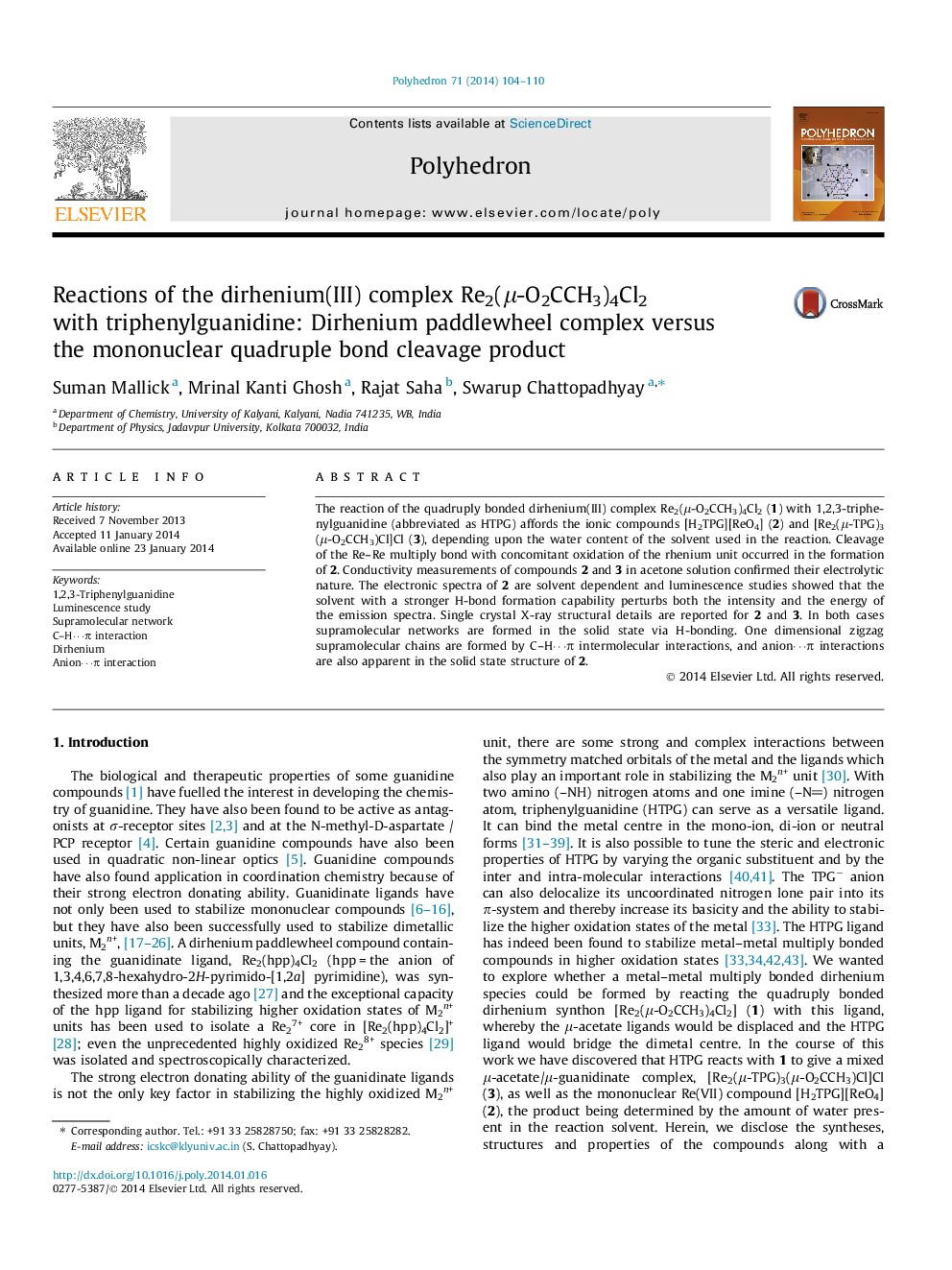| Article ID | Journal | Published Year | Pages | File Type |
|---|---|---|---|---|
| 1336706 | Polyhedron | 2014 | 7 Pages |
The reaction of the quadruply bonded dirhenium(III) complex Re2(μ-O2CCH3)4Cl2 (1) with 1,2,3-triphenylguanidine (abbreviated as HTPG) affords the ionic compounds [H2TPG][ReO4] (2) and [Re2(μ-TPG)3(μ-O2CCH3)Cl]Cl (3), depending upon the water content of the solvent used in the reaction. Cleavage of the Re–Re multiply bond with concomitant oxidation of the rhenium unit occurred in the formation of 2. Conductivity measurements of compounds 2 and 3 in acetone solution confirmed their electrolytic nature. The electronic spectra of 2 are solvent dependent and luminescence studies showed that the solvent with a stronger H-bond formation capability perturbs both the intensity and the energy of the emission spectra. Single crystal X-ray structural details are reported for 2 and 3. In both cases supramolecular networks are formed in the solid state via H-bonding. One dimensional zigzag supramolecular chains are formed by C–H⋯π intermolecular interactions, and anion⋯π interactions are also apparent in the solid state structure of 2.
Graphical abstractThe reaction of Re2(μ-O2CCH3)4Cl2 (1) with 1,2,3-triphenylguanidine (HTPG) affords the Re–Re multiply bonded cleavage product [H2TPG][ReO4] (2) and the mixed μ-acetate/μ-guanidinate complex [Re2(μ-TPG)3(μ-O2CCH3)Cl]Cl (3), depending upon the water content of the solvent used in the reaction. Compounds 2 and 3 have been characterized by elemental analyses, IR, UV–Vis and 1H NMR spectroscopies and by X-ray crystallography.Figure optionsDownload full-size imageDownload as PowerPoint slide
